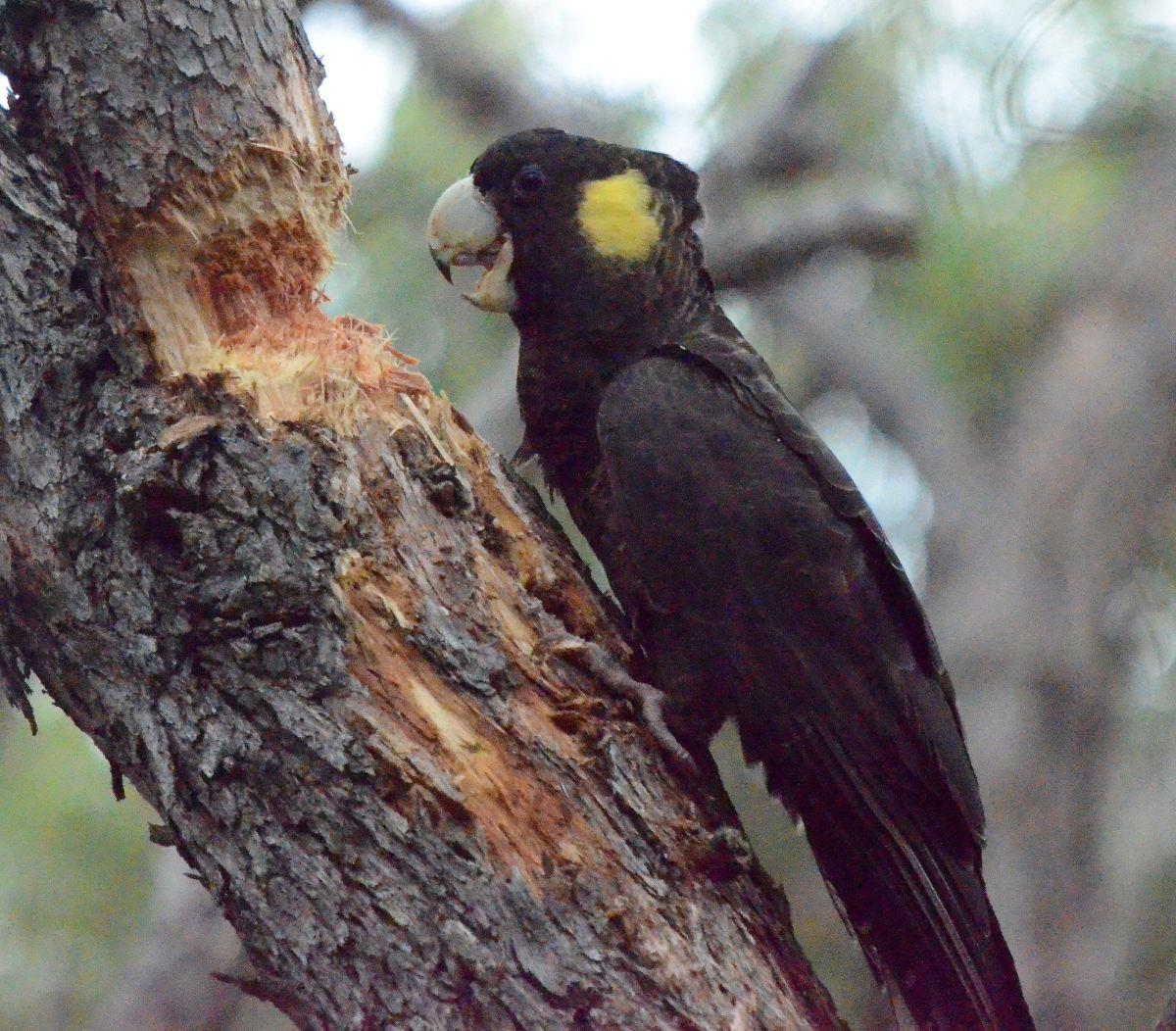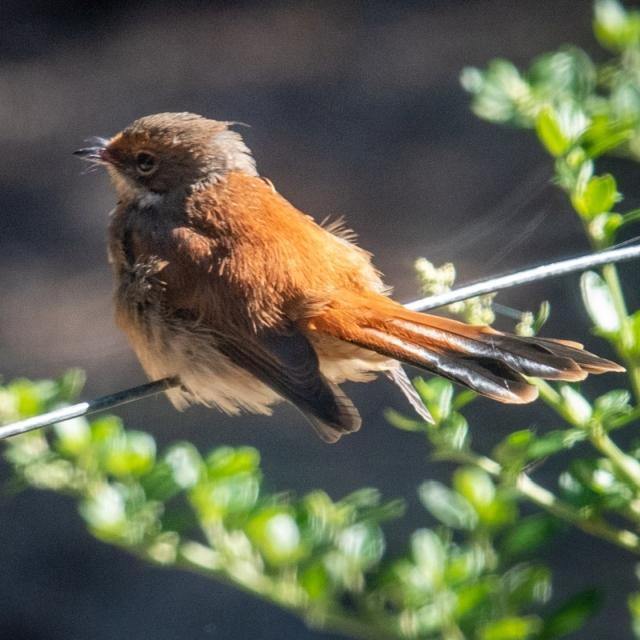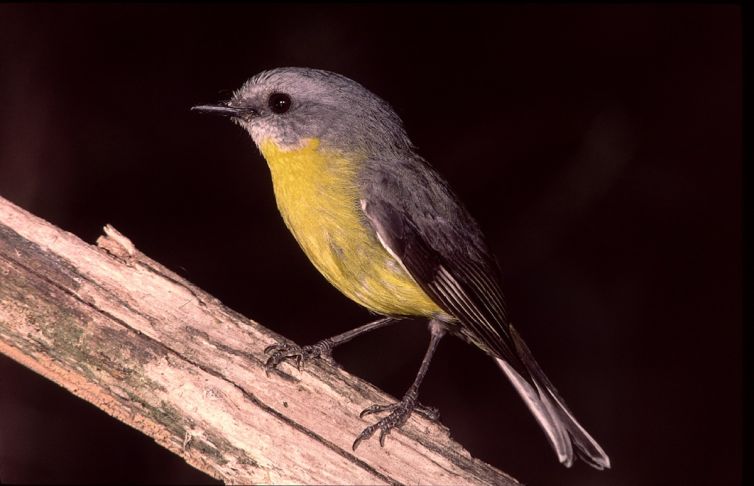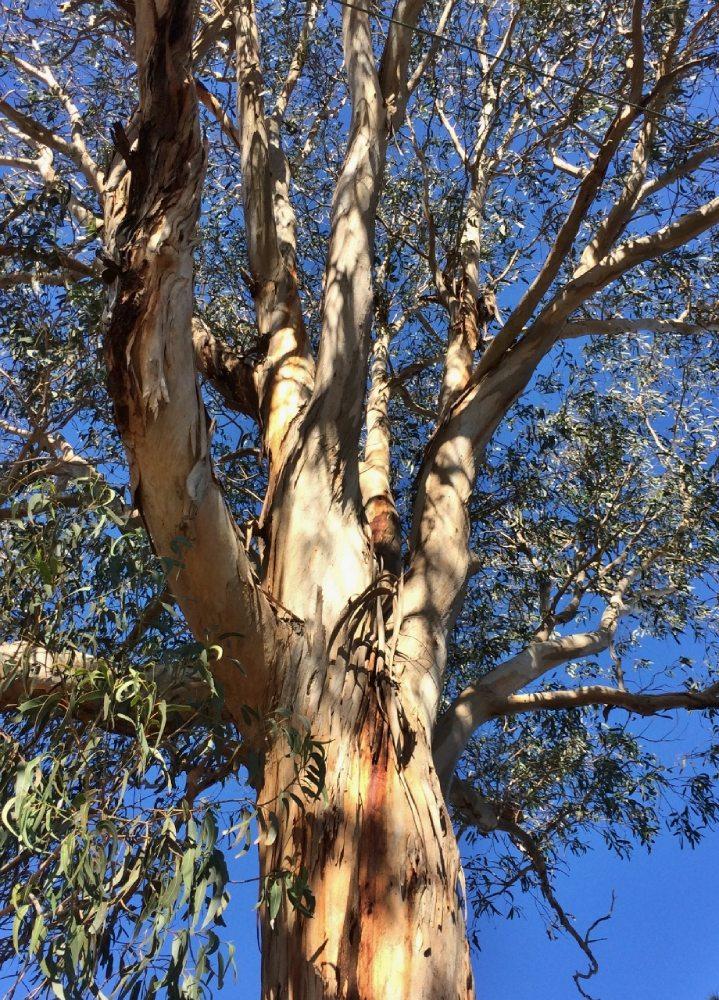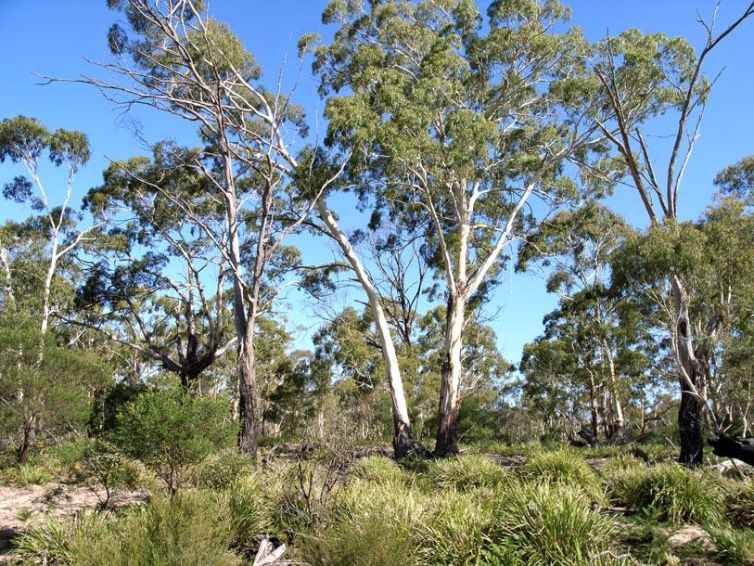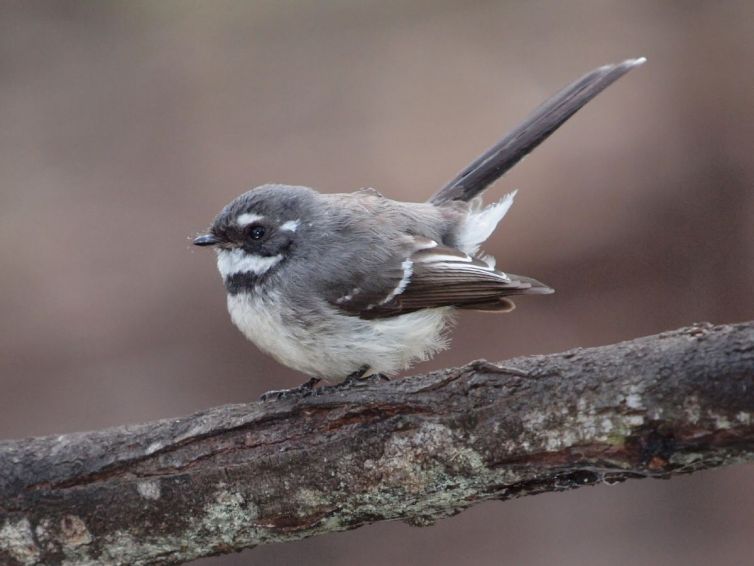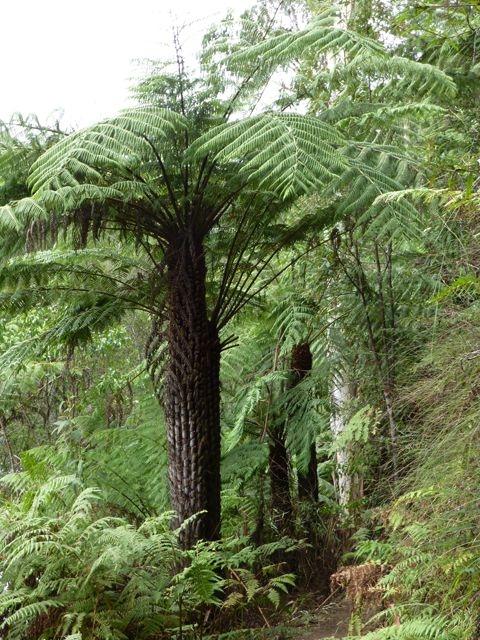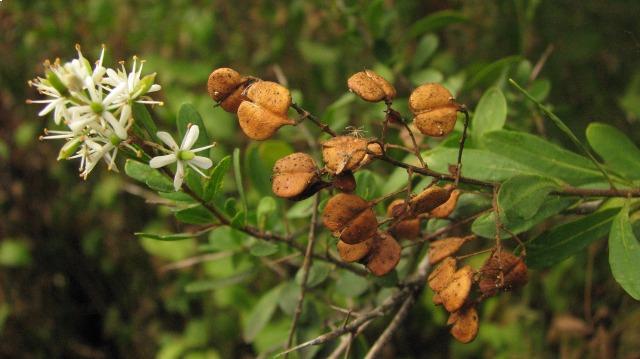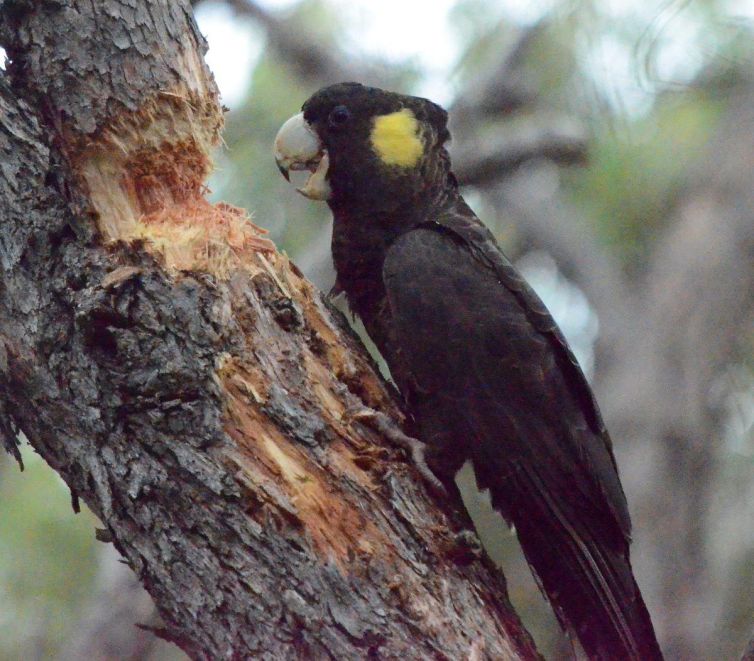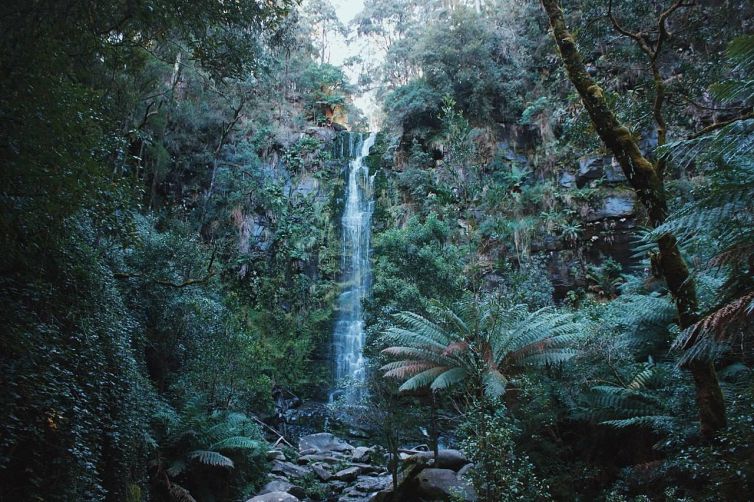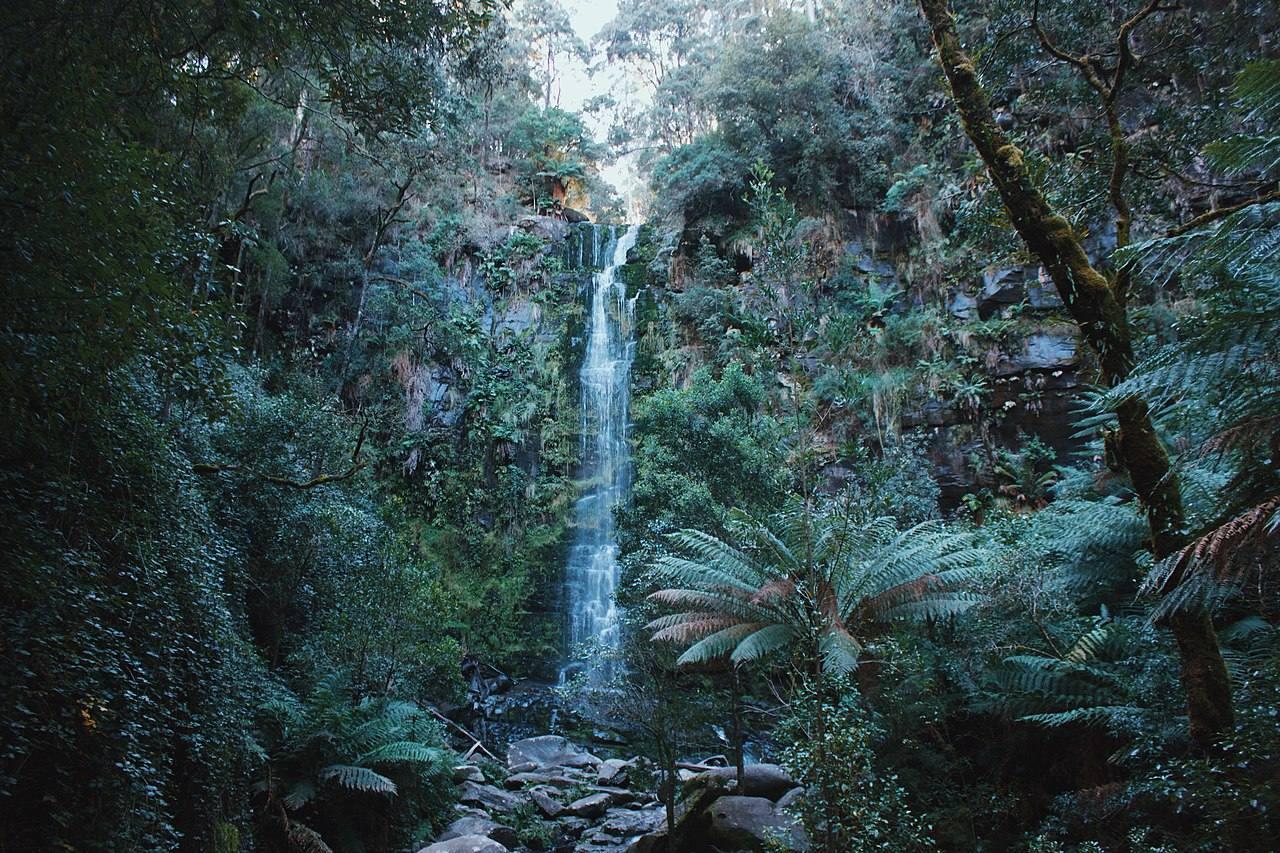
Drive west on the Great Ocean Road and cross the Erskine River bridge at Lorne. Take the first turn right into Otway Street. Continue along this road for 0.6 km to William Street and turn right at the Erskine Falls sign. Continue along this road for 11km to the Erskine Falls Car Park. Leave pick-up car at Lorne for the long walk.
The walk starts at the car park with the track descending quite steeply down steps to the first lookout where views of the Falls cascading into a deep pool can be gained. The Falls are certainly very spectacular as they tumble over the dark ledges, framed by tall tree ferns and other vegetation of various shades of green. Even in drier times the cascading water is most attractive, as it forms a thin curtain falling over the black ledges adorned with green moss. More spectacular views are gained from the second lookout another 240 steps further downstream.
Experienced walkers might like to complete the long walk, continuing downstream from the second look-out. This section should not be attempted when water levels are high as there are a number of river crossings to be negotiated along the track. You will walk past two smaller waterfalls – Straw Falls (approximately 400 m downstream) and the beautiful Splitter Falls named after early timber workers (a further 2 km).
The walk continues through the natural amphitheatre used for church services prior to the first church being built in Lorne in 1875.
The track then leads through gully vegetation including tree ferns and varieties of ground ferns, Hazel Pomaderris, Blackwood and Sweet Bursaria before finally reaching the Lorne township. On the higher levels, forest vegetation of tall Southern Blue-gums and Manna Gums is a feature.
The water and varied vegetation attract many birds with Gang-gang Cockatoos, Yellow-tailed Black-Cockatoos, Eastern Yellow Robins, Grey and Rufous Fantails and Superb Fairy-wrens often sighted near the tracks.
Rufous Fantail (Photo by Marg Lacey)
Gang-gang Cockatoo (Photo by Alison Watson)
Sweet Bursaria (Photo by Ellinor Campbell)
Yellow-tailed Cockatoo (Photo by Rob Shepherd)
Superb Fairy-wren (Photo by Margaret Lacey)
Manna Gum (Photo by Murray Fagg, CC BY)
Grey Fantail (Photo by Duncan McCaskill, CC BY)
Rough Tree-fern (Photo by Alison Watson)
Erskine Falls (Photo by Ari Moore CC BY)



